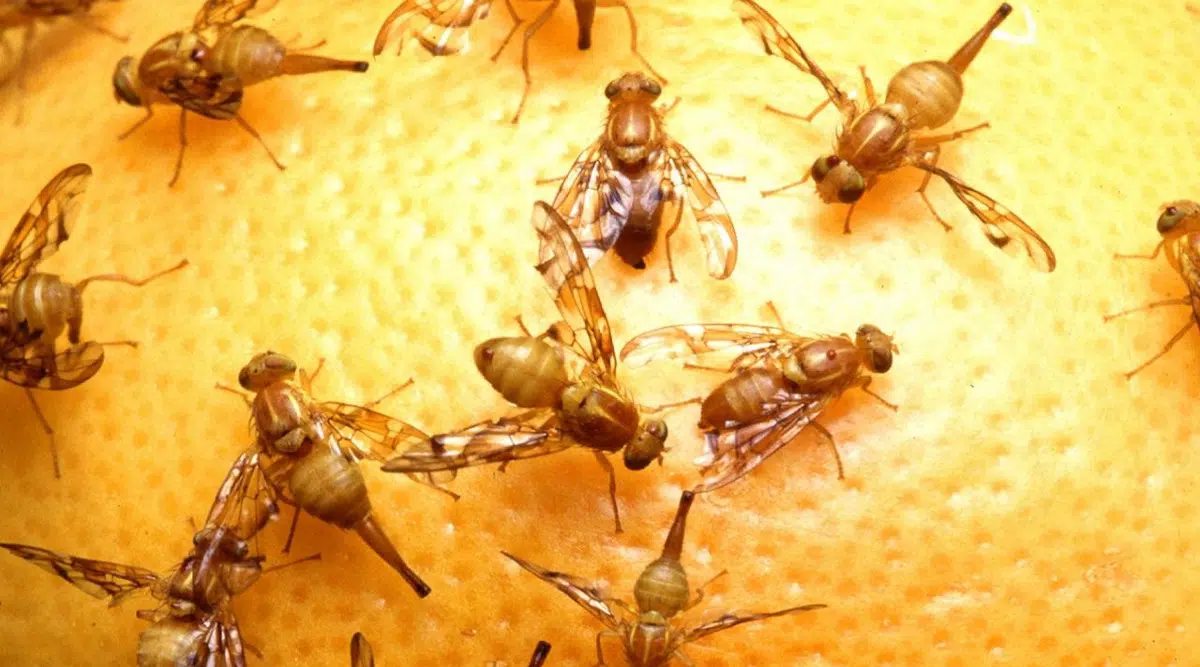Just under a year after California began contending with a spread of invasive fruit flies not seen before in such large quantities, state and federal environmental officials announced that the pests had been eradicated statewide.
Invasive species of wild fruit flies from other parts of the world were detected in unusually high quantities in 2023 across California, a state where agriculture is a vital industry. Because these types of flies can damage or destroy hundreds of varieties of crops, officials took comprehensive action to stop them from multiplying rapidly and causing massive damage. The United States Department of Agriculture said it coordinated with the California Department of Food and Agriculture to address the outbreak, and together they successfully addressed infestations that touched various counties and involved five different species of fruit fly.
The insects – Oriental, Tau, Queensland, Mexican, and Mediterranean – originated in a range of places around the globe, including countries in Africa, Asia and Latin America, as well as some native to Hawaii. The most common route for them from their origin sites to California would be through contaminated produce brought back illegally to the U.S. by travelers, or homegrown produce that germinated elsewhere and was sent to California, CBS San Francisco reported last year.
“Invasive fruit flies are among the most destructive and costly pests globally, threatening more than 400 species of fruits and vegetables, including many of California’s most valuable crops such as oranges, grapes, mangoes, blueberries and tomatoes,” said Jenny Moffitt, the undersecretary for marketing and regulatory programs at the USDA, in a statement.
Officials instituted quarantine zones for agricultural areas across California when the non-native insects were first spotted in the state in 2023. Those quarantines — which had been active in Contra Costa, Los Angeles, Orange, Sacramento, San Bernardino, Santa Clara, San Diego, Riverside and Ventura Counties — were finally lifted with the eradication announcement. That means thousands of acres worth of commercial agricultural land will no longer operate under restrictions brought in response to the fruit fly outbreak, they said.
Properties within former quarantine zones had to comply with safety requirements set out by the state to ensure the pests did not multiply. Some of the rules that the state prescribed were prohibiting farmers from packing crops that could “host” any of the invasive fruit flies, and outlining specific instructions for properly processing and disposing of crops that could be hosts.
The USDA described last year’s outbreak as “unprecedented,” and called it the worst infestation of invasive fruit flies that California had seen in at least a century. The quarantines ordered due to the Tau flies and Queensland fruit flies discovered in parts of California were the first of their kind in the Western Hemisphere, according to the USDA.
Citing the California agricultural department, CBS Los Angeles reported that Mediterranean fruit flies could potentially target more than 250 kinds of fruits and vegetables. They typically damage fruits by laying eggs that become maggots and tunnel through the produce, which spoils it.
Millions of sterile Mediterranean and Mexican fruit flies were released into California environments that faced infestations, in hopes of interrupting the reproduction processes of the others. Meanwhile, hundreds of employees with the USDA’s animal and plant health inspection service joined California environmental officers to trap and remove the invasive flies from agricultural lands, while also surveying the species for the year to confirm those efforts were working.
In October, officials bombarded quarantined parts of Los Angeles and Culver City with more than 2 million sterilized fruit flies after officials identified two wild Mediterranean fruit flies in that area, CBS Los Angeles reported. Back then, the quarantine area covered almost 70 square miles and included growers, wholesalers and retailers of susceptible fruit within those boundaries, in addition to private residents who tended to at-home gardens.
“The eradication of these pests marks a major victory for California’s agricultural economy,” said Moffitt.





